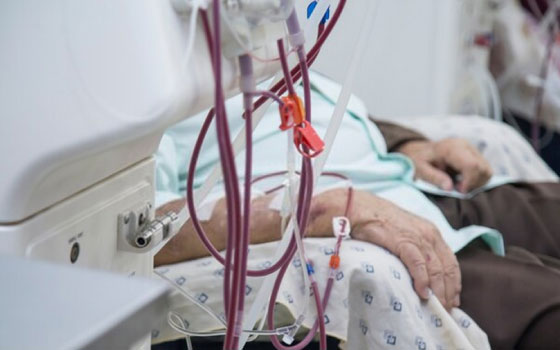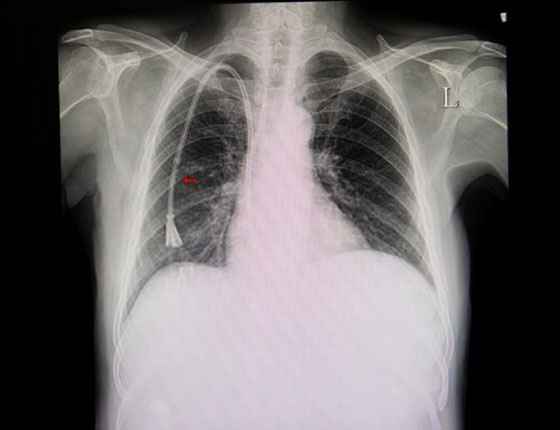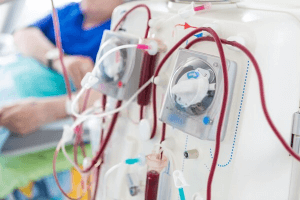
What Is Dialysis Access?
Vascular or dialysis access is a lifeline for people with kidney problems. An access is a way to reach your blood so that it can be cleaned effectively. The access procedure typically needs to be performed for the rest of your life or until you receive a successful kidney transplant.gender.
If a kidney transplant is unsuccessful, the dialysis process can be started again. This treatment is essential for people with end-stage kidney disease and needs to be carried out by a qualified vascular specialist. Some forms of acute kidney failure may get better after treatment.
When Is Dialysis Needed?
Dialysis is used to replace healthy kidney function for people in the end stages of kidney disease. When the kidneys are unable to take care of the body, this form of treatment can save and extend lives. Dialysis is also used sometimes on a short-term basis to treat acute kidney failure.
Dialysis is typically used when someone loses 85-90 percent of their normal kidney function and has an estimated glomerular filtration rate (GFR) of less than 15. Your GFR is calculated using the results of your blood creatinine test, age, body size, and gender.
Methods Of Dialysis Access
Several dialysis access methods are available, with a vascular specialist able to cater a treatment plan based on your symptoms and needs.
Arteriovenous (AV) fistula
An AV fistula involves an organic link between an artery and a vein under the skin of your arm. This method of dialysis access is often described as the most effective because it only involves your own blood vessels. While fistulas can work for most people, they may not function properly when there is an underlying medical condition, a blood vessel disease, or a pacemaker. This method of dialysis access can last for years or even decades in certain conditions.
Arteriovenous (AV) graft
An AV graft involves making a connection between an artery and a vein using a piece of synthetic or bovine vein. While the tissue used is not your own and may be synthetic, this method of dialysis access is generally considered to be the second-best option. An AV graft may be more susceptible to infection and blood clots than a fistula, with the access needing to be replaced after a few years and declotting procedures possibly needed.
Hemodialysis (HD) catheter
A catheter is a soft synthetic tube that's usually placed in your neck or another large vein. A catheter has a Y-shaped appearance, with one end of the tube going into a central vein in your chest and the other joining with your heart. While a catheter can be placed and removed on the same day, the risk of disease and death is higher due to the close connection with your heart. Catheters are often used to provide temporary access, especially when the existence of weak blood vessels rules out other access methods.
Types of Dialysis
There are three main types of dialysis treatment: hemodialysis, peritoneal dialysis, and hemofiltration. There are also two secondary types that use a combination approach (hemodiafiltration), or an alternative diet-based approach (intestinal dialysis).

Hemodialysis is the most common reason for dialysis access, with the patient's blood pumped through the blood compartment of a dialyzer composed of a filter membrane and dialysate compartment. This permeable filter structure is made from a network of tiny synthetic fibers. Blood flows from the body through these fibers, with waste products removed and clean blood returned to the body.
Peritoneal Dialysis
Peritoneal dialysis access is a type of dialysis access that can be performed at home, although minor surgery is still needed to set up and maintain the equipment. This form of dialysis runs a sterile solution with glucose around the peritoneal and abdominal cavity, with this solution used to clean the blood and changed regularly. While this treatment is not as effective as hemodialysis, it can be carried out over a longer period.
Hemofiltration
Hemofiltration is similar in many ways to hemodialysis, with blood pumped through a dialyzer but no dialysate used. This treatment works due to the pressure gradient that exists across the filter membrane. Hemofiltration can clear dissolved substances with a large molecular weight, with salts and water also removed and replaced with a substitution fluid.
What’s Next
Costs and Payment Options
Dialysis access and dialysis treatment are covered by health insurance in the United States. For example, with Medicare, a patient will only have the pay the deductible cost of about $150. According to a study published in Health Affairs, the average U.S. patient with insurance pays $114 for dialysis-related drug costs and about $10 in dialysis costs per month.
For patients not covered by health insurance, treatment can be much more expensive. A single hemodialysis treatment typically costs up to $500 or more, with a standard three treatments per week averaging about $72,000 per year.
If you need a dialysis access, it's important to seek help from a qualified and experienced vascular specialist. After examining your condition and making an assessment based on your medical history and symptoms, the doctor will decide on the type of access required and timeline involved. An ultrasound will be carried out during this phase to map your blood vessels.
Dialysis access surgery does not have to take long, with many cases dealt within an hour or two. Depending on the access method used, and the overall condition of the patient, local or general anesthetic will be used before the surgery. While some fistulas or grafts only require a single incision, others may need large incisions that require stitches. Catheters are often placed in emergency situations, with a tunnel made under your skin before the catheter is inserted over a wire.
Whether you have a fistula, a graft, or a catheter installed, it's important to care for your dialysis access to ensure its correct operation. Immediately after surgery, it's important to care for your wound and look for redness and swelling in the days and weeks that follow. While kidney disease is mostly a hidden condition, fistulas and grafts can take some getting used to and may be noticed by others.
- Stenosis can be a problem, with this condition recognized by a narrow spot that can reduce or stop blood flow. Stenosis can lead to blood clots, which can sometimes be recognized by high-pressure readings, longer bleeding after treatment, and a high pitched sound from your bruit.
- Blood clots can also cause problems, even when there is no pressure sensation or bruit sound. It's important to seek medical help immediately if you think your access is clotting.
- An aneurysm is a weak bulging spot that can lead to rupture. If you see any large bumps on your fistula, it's important to seek medical help as soon as possible.
Accreditation & Awards, Memberships







